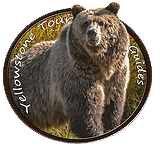Hiking In Yellowstone? Here’s What You Need To Know
With over 900 miles of trails and 300 backcountry campsites, Yellowstone National Park is a hiker’s dream. But before you start your journey, it’s important to know what precautions you should take. Weather, elevation, wildlife encounters, and the physiological effects of the park’s terrain can make a difference between a comfortable hike and a dangerous one, so our Yellowstone tour guides are here to help.
Precautions
Yellowstone is a magical place that boasts a wealth of natural beauty and a host of wildlife to watch. However, it’s important to be aware of some safety precautions you need to take when hiking in this national park. One of the most common safety concerns for hikers is that of wildlife. While many of these animals are docile and calm, others can become aggressive if they feel threatened. Bears are perhaps the most dangerous animal to watch for when in the park, but other animals like bison can be equally unpredictable. If you encounter a bison, give it space and wait for it to move away from you. Moose are another animal that should be kept on the lookout for, especially during rut season. These strong animals with large antlers can be quite aggressive, so if you see a moose, don’t try to walk around it or approach it.
What To Bring
If you’re planning on a single-day hiking trip in Yellowstone, here are a few essentials that you’ll want to bring with you. They’ll help you stay comfortable and happy on your adventure! First of all, you’ll want a backpack or day pack to carry all your gear. Whether you’re staying in a campground or tenting, you’ll need a bag that can hold everything you need and is comfortable to wear throughout the day. You’ll also need a few things to keep you safe, like sunscreen and bear spray. Sunscreen is especially important if you’re going to be hiking around high altitudes, where the UV rays can be intense. You’ll also need a hat to protect your head from the sun and wind. You can opt for a baseball cap or a hat that can be crushed and packed down, so it won’t take up too much space in your pack. Keeping your hands warm is also important, so be sure to bring insulated gloves or mittens.
Staying Safe
Hiking in Yellowstone is an excellent way to get up close and personal with nature, but there are a few things to look out for before you go. For one, bears can be a big threat to visitors, so be sure to lock up any food or plates you’ll be carrying. Another thing to keep in mind is that hiking off the trail is frowned upon, so you’ll want to stay on the designated pathways as much as possible. Straying can lead to a variety of negative consequences, such as damaging the ecosystem or harming wildlife. You should also plan to spend at least 3 days in Yellowstone to really see and do it all! That way you can fit in all the must-sees and still have time to hike some extra trails, too. Contact us to start planning your next adventure now!
